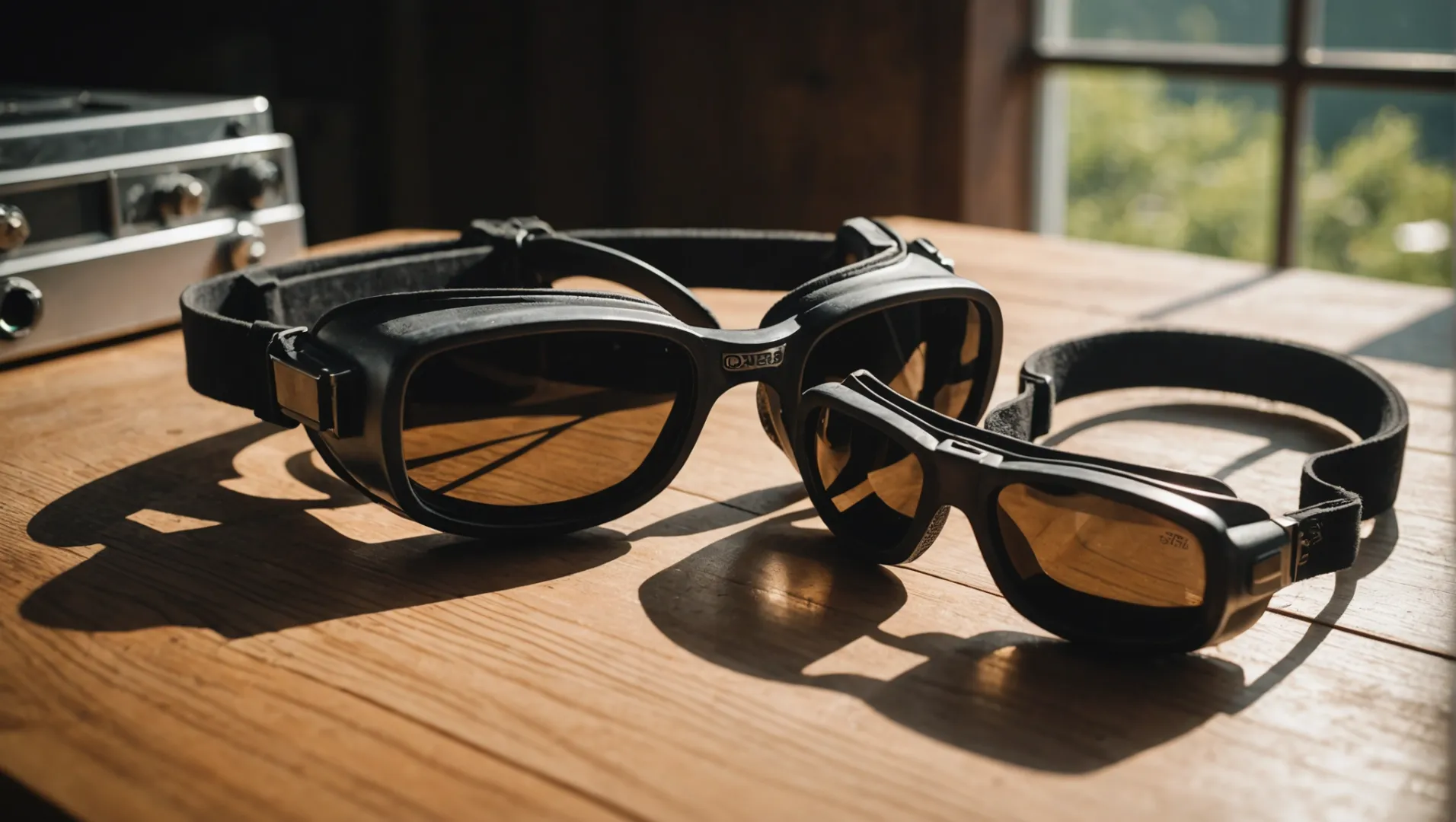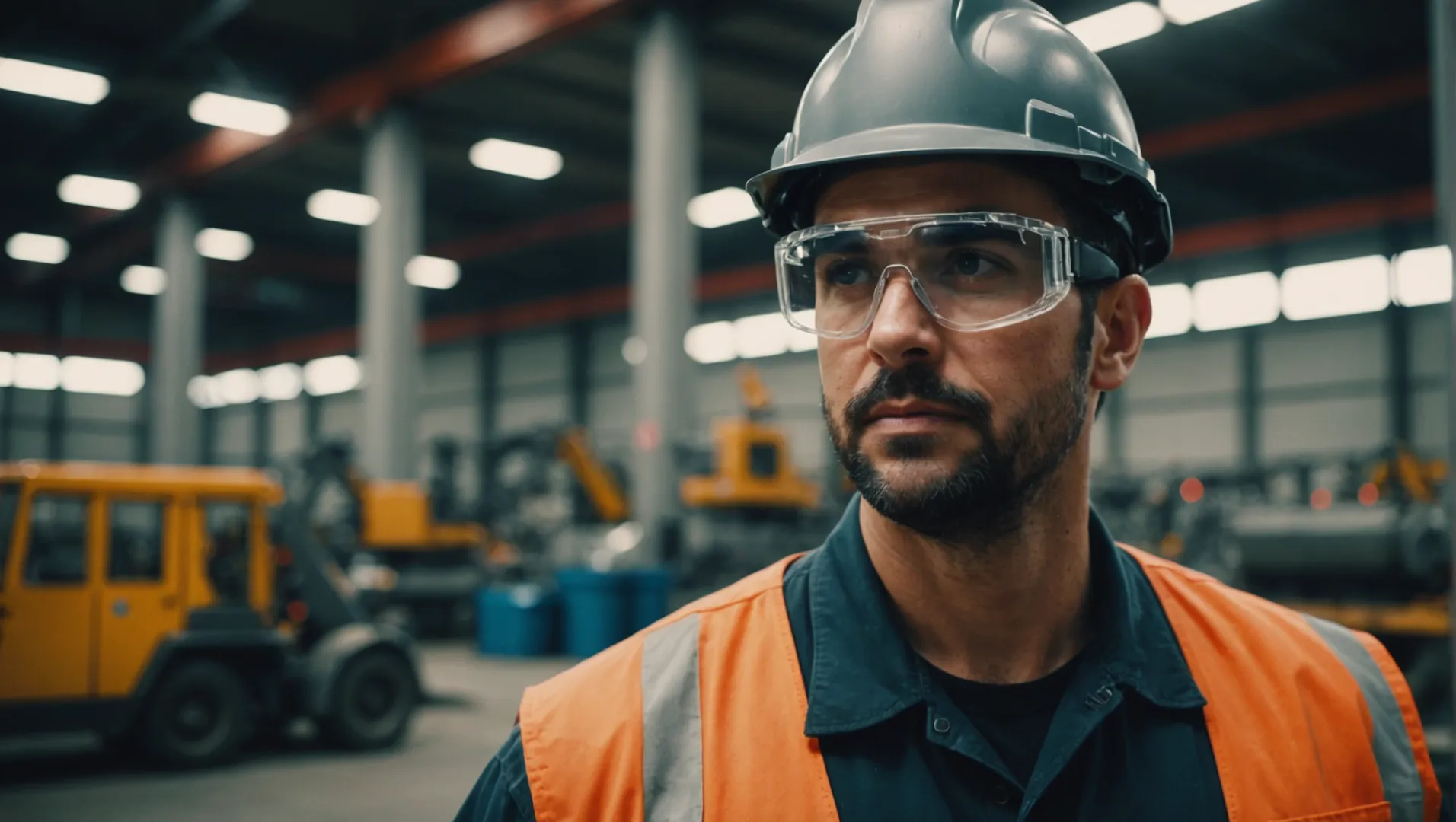
Have you ever found yourself in a pinch, wondering if those bulky welding goggles could double as sunglasses? Let’s unravel this together!
Welding goggles are not suitable as sunglasses due to their low visible light transmission and lack of polarization, which makes them impractical for daily outdoor use.
While welding goggles excel in protecting eyes from intense welding light, they lack the visibility and comfort we need for everyday adventures. Let’s explore why specialized sunglasses truly shine in outdoor settings.
Welding goggles can replace sunglasses for outdoor use.False
Welding goggles have low visible light transmission and lack polarization, making them unsuitable for everyday outdoor activities.
What Are the Key Differences Between Welding Goggles and Sunglasses?
Choosing between welding goggles and sunglasses isn’t just about style; it involves understanding their unique functions and protective capabilities.
Welding goggles differ from sunglasses primarily in light filtering, comfort, and functional specificity, making them unsuitable for everyday use.

Light Filtering Characteristics
Both welding goggles and sunglasses are designed to protect the eyes from harmful light, but they serve very different purposes.
-
Welding Goggles: These are engineered to shield the eyes from high-intensity light during welding, including ultraviolet (UV), infrared (IR), and visible light. They typically block over 99% of UV light and have minimal visible light transmission, often below 10%, making them unsuitable for normal outdoor activities.
-
Sunglasses: Sunglasses are primarily intended to filter UV rays from sunlight while allowing enough visible light to pass through so the wearer can see comfortably. They usually have visible light transmission rates between 20% and 70%, which helps reduce glare while maintaining clarity.
| Feature | Welding Goggles | Sunglasses |
|---|---|---|
| UV Protection | Very High | High |
| Visible Light Transmission | Very Low ( <10%) | Moderate (20-70%) |
| IR Protection | Yes | No |
Comfort and Convenience
Comfort is a significant factor when choosing eye protection. Here’s how each type fares:
-
Welding Goggles: Designed for short-term use during welding tasks, these goggles are often heavier and can be uncomfortable for extended wear. They are built to stay securely in place during intense activities but may cause pressure on the nose and ears with prolonged use.
-
Sunglasses: Built for comfort over extended periods, sunglasses are made with lightweight materials and ergonomic designs. They are suitable for all-day wear and come in various styles to suit fashion preferences.
Functional Specificity
The intended use of these protective eyewear items further highlights their differences:
-
Welding Goggles: Specialized for protecting against the specific light hazards of welding, these goggles are not meant for general outdoor use.
-
Sunglasses: These often include polarization to reduce glare from reflective surfaces like water or roads, enhancing visual clarity for various outdoor activities.
Understanding these distinct functions1 can help in making an informed choice between using welding goggles or sunglasses for your needs. The unique design and purpose of each type make them excel in their specific areas but not interchangeable.
Welding goggles block over 99% of UV light.True
Welding goggles are designed to protect against high-intensity light, including UV.
Sunglasses provide infrared protection.False
Sunglasses are not designed to protect against infrared light.
How Do Welding Goggles Handle UV and Visible Light?
Welding goggles offer exceptional protection against the intense light from welding arcs, but how exactly do they manage UV and visible light?
Welding goggles protect against UV and visible light by using specialized filters that block over 99% of harmful UV rays while allowing minimal visible light transmission, essential for shielding eyes during welding tasks.

Understanding Light Transmission in Welding Goggles
Welding goggles are meticulously designed to protect the eyes from hazardous light emissions generated during welding operations. They primarily address two types of light: ultraviolet (UV) and visible light.
-
UV Light Protection: Welding arcs emit a significant amount of UV radiation, which can cause severe eye damage if unprotected. Welding goggles incorporate high-efficiency filters that block over 99% of UV rays. This protection is crucial to prevent photokeratitis2, a painful eye condition caused by UV exposure, akin to sunburn of the cornea.
-
Visible Light Transmission: The visible light emitted during welding is often intense enough to cause temporary or permanent vision impairment. To counter this, welding goggles are equipped with extremely low visible light transmission rates, often below 10%. This reduction ensures that the welder’s eyes are shielded from the blinding brightness of the welding arc while still allowing sufficient visibility to perform precise tasks.
Comparing Welding Goggles to Other Eye Protection
| Feature | Welding Goggles | Sunglasses |
|---|---|---|
| UV Protection | Blocks over 99% | 100% for UV-A and UV-B |
| Visible Light Transmission | Less than 10% | 20%-70% |
| Polarization | No | Often Yes |
- Infrared (IR) Protection: Beyond UV and visible light, welding goggles also protect against infrared radiation, which can lead to thermal injuries of the eye. This multifaceted protection is critical in environments where multiple types of light exposure occur simultaneously.
The design and material choice in welding goggles are specific to these needs, which is why they differ significantly from regular sunglasses that prioritize comfort and style over comprehensive light filtration. Understanding these differences can help in selecting the appropriate protective eyewear for specific environments.
Welding goggles block over 99% of UV rays.True
Welding goggles use high-efficiency filters to block harmful UV radiation.
Welding goggles allow more than 10% visible light transmission.False
They allow less than 10% visible light to protect against brightness.
Why Is Comfort Important in Protective Eyewear?
Protective eyewear is vital for safety, but why is comfort equally crucial?
Comfort in protective eyewear ensures prolonged use, preventing distractions and enhancing focus during tasks requiring eye protection.

The Role of Comfort in Safety Gear
In any safety gear, comfort is not just a luxury—it is a necessity. Comfortable protective eyewear allows wearers to keep them on for extended periods without discomfort, reducing the urge to remove them even momentarily, which could expose the eyes to hazards. For instance, in industries like welding, where eye safety is paramount, eyewear that causes pressure or irritation might be quickly discarded, leading to potential injuries.
Material Matters
The materials used in protective eyewear significantly impact comfort. Lightweight materials reduce strain on the nose and ears. Soft padding around the frames can prevent pressure points and skin irritation. Consider ergonomic design features3 that distribute weight evenly across the face, ensuring minimal discomfort during prolonged use.
The Importance of Adjustability
Adjustable frames and straps allow for a custom fit, accommodating various head sizes and shapes. This flexibility can prevent slippage and ensure the eyewear stays securely in place during dynamic movements. Adjustable features are particularly beneficial in environments requiring physical activity, where secure fitting minimizes distractions.
Impact on Performance and Productivity
Comfortable eyewear can enhance worker productivity by allowing them to focus on their tasks without interruptions caused by discomfort. For instance, if a welder is constantly adjusting their goggles due to discomfort, it disrupts their workflow and increases the risk of mistakes or accidents. Ensuring comfort boosts concentration and efficiency in potentially hazardous settings.
Comparing Comfort Across Eyewear Types
| Type of Eyewear | Key Comfort Features | Typical Use Cases |
|---|---|---|
| Welding Goggles | Heavy-duty protection with limited comfort adjustments | Short-term industrial tasks |
| Sunglasses | Lightweight and stylish with a focus on long-term wear | Everyday outdoor activities |
| Sports Goggles | Designed for stability and comfort during movement | Athletic events |
Ultimately, prioritizing comfort in protective eyewear design leads to better safety outcomes by ensuring that users keep their eyes protected without the distraction of discomfort.
Comfortable eyewear reduces workplace accidents.True
Comfort ensures consistent use, preventing exposure to hazards.
Heavy protective eyewear is more comfortable than lightweight.False
Lightweight materials reduce strain, enhancing comfort.
Are There Situations Where Welding Goggles Could Be Used Outdoors?
Considering wearing welding goggles outside? While unconventional, there are niche situations where it might make sense.
Welding goggles can be used outdoors in specific scenarios like viewing solar eclipses or during welding tasks. However, they are not suitable for general use due to their limited visibility and lack of features like polarization.

Viewing Solar Eclipses Safely
One outdoor application for welding goggles is during a solar eclipse. These events require special eye protection because direct viewing can cause serious eye damage. Standard sunglasses are not sufficient for this purpose, but welding goggles with the correct shade rating can effectively protect your eyes from harmful solar radiation. It’s crucial to use a shade level between 12 and 14 to ensure safety.
Outdoor Welding Tasks
Welding tasks performed outside, such as repairing metal structures or constructing metal frameworks, necessitate the use of welding goggles. In these situations, the goggles serve their intended purpose by providing protection from the intense light produced by welding arcs. This is one of the few contexts where welding goggles are appropriate for outdoor use. However, they should not be used for non-welding activities due to their limited visibility and high shade levels.
Understanding Limitations
While welding goggles might seem versatile, their design is highly specialized. They do not feature polarization4, which is critical for reducing glare from reflective surfaces like water or snow. This lack of polarization makes them unsuitable for activities such as skiing or driving. Additionally, welding goggles have a low visible light transmission rate, rendering them impractical for general outdoor use where seeing your surroundings clearly is essential.
Specialized Situations Require Specialized Gear
In summary, while there are certain outdoor scenarios where welding goggles can be beneficial, they are rare and specific. For most outdoor activities, investing in a quality pair of sunglasses designed to enhance visibility and comfort is advisable. Sunglasses with features like UV protection and polarization are better suited for everyday use and provide the necessary protection and comfort for a wide range of outdoor environments.
Welding goggles are suitable for viewing solar eclipses.True
Welding goggles with a shade level between 12 and 14 protect eyes during solar eclipses.
Welding goggles are ideal for skiing or driving.False
Welding goggles lack polarization, making them unsuitable for activities like skiing or driving.
Conclusion
In summary, welding goggles are not a suitable replacement for sunglasses. Prioritize appropriate eyewear for optimal eye protection and comfort during outdoor activities.
-
Gain insights into why welding goggles aren’t interchangeable with sunglasses.: The level of protection provided by welding glass depends on the shade of the glass. The darker the shades of the lens, the better the protection. The shade … ↩
-
Learn about photokeratitis and how welding goggles provide essential protection.: Photokeratitis may be prevented by wearing eye protection that blocks UV radiation. This includes: sunglasses that block or absorb 99 percent or … ↩
-
Discover how ergonomic designs enhance comfort and usability.: These ergonomic spectacles are distinguished by their flat lens geometry. This prevents dangerous tunnel vision, because the safety spectacles … ↩
-
Learn how polarized lenses improve visibility by reducing glare.: Polarized lenses are designed to filter out horizontal light rays, which are commonly found on reflective surfaces like snow, sand and water, reducing glare … ↩



